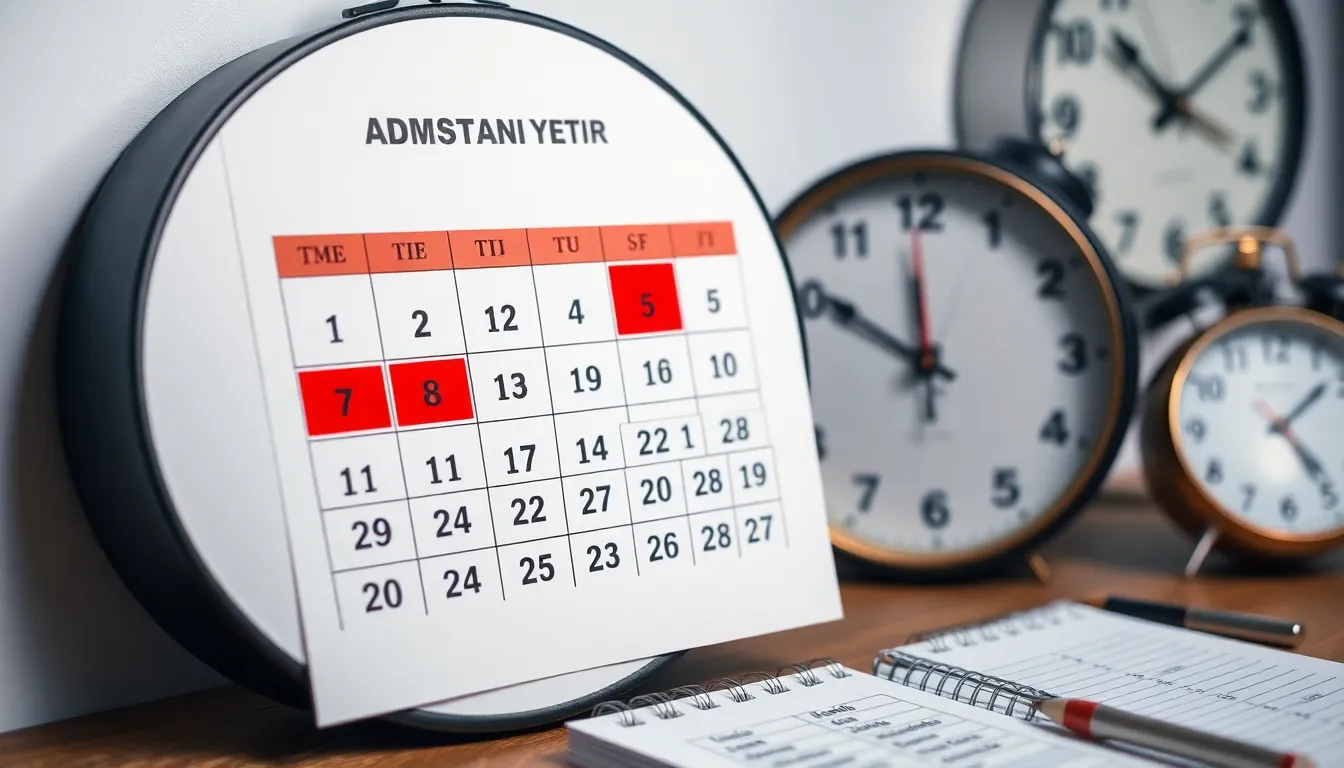Table of Contents
ToggleCalculating the number of days in 16 years might seem like a math problem best left to calculators and over-caffeinated mathematicians. But hold on! This seemingly simple question can lead to some surprising insights about time, life, and maybe even how many birthdays you’ve celebrated. Spoiler alert: it’s more than you think!
Understanding Time Conversions
Understanding how time is measured provides clarity when calculating days in years. Time consists of various units, including seconds, minutes, hours, days, months, and years.
The Basics of Time Measurement
Time measurement relies on a standard system used globally. Seconds, as the smallest unit, group together to form minutes and then hours. Days consist of 24 hours, while months and years consist of multiple days, resulting from Earth’s orbit around the sun. Knowledge of these units aids in converting time more effectively.
Converting Years to Days
Converting years to days involves a straightforward calculation. Each year typically consists of 365 days. For leap years, an additional day is added, totaling 366 days. Thus, 16 years equates to 5,840 days in standard years. Including leap years, one might engage in further calculations to achieve accuracy.
Calculating Days in 16 Years

Calculating the total days in 16 years involves understanding standard and leap years. This process provides a clear picture of time spent over an extended period.
Breakdown of Leap Years
Leap years occur every four years, adding an extra day to the calendar. In a 16-year span, there are typically four leap years. For instance, if the period starts in a year divisible by four, then leap years will be 4, 8, 12, and 16. These leap years contribute an additional four days to the overall count. Recognizing these specifics helps refine the calculation and offers clarity on time measurement.
Total Days Calculation
To find the total days in 16 years, the calculation starts with 365 days per standard year. Multiplying 16 by 365 yields 5,840 days. Adding four days from leap years brings the total to 5,844 days. This simple formula illustrates how year lengths accumulate and emphasizes the importance of factoring in leap years for accuracy. Thus, 16 years equals 5,844 days, a figure holding significance in understanding time’s impact on life.
Practical Implications of This Duration
Understanding that 16 years equals 5,844 days highlights the amount of time that shapes lives. This duration often encompasses significant milestones and events.
Significant Events in 16 Years
A 16-year span often includes events like graduations, marriages, and birth of children. Many will experience personal growth during this period, leading to career advancements and pivotal decisions. Major cultural shifts or technological advancements also frequently happen over this timeframe. For instance, in 2007, the introduction of the iPhone revolutionized communication. Such moments become more memorable when viewed through the lens of time, emphasizing their impact on individual lives.
Planning for the Future
Planning for the future within a 16-year framework allows for goal setting and strategic life choices. Individuals can choose to invest in education, save for retirement, or purchase a home during this period. It’s essential to consider that time impacts financial growth and personal development. Choices made today influence the quality of life years down the road. For example, investing early in a retirement plan can lead to significant financial benefits. Prioritizing these plans ensures that individuals prepare adequately for various future possibilities.
Common Misconceptions
Misunderstandings about time calculations often arise when discussing the length of years in terms of days. Clarity on this topic can help prevent confusion.
Misunderstanding Leap Years
Many people think leap years occur every five years, but that’s not accurate. Leap years actually happen every four years, with exceptions for years divisible by 100 but not 400. For a 16-year period, typically, four leap years are present. This means an extra day must be added to the total day count. The frequent assumption that leap years are less significant in everyday calculations leads to inaccurate totals, especially when planning for events over extended time frames.
Other Time Conversion Confusions
Time conversion often confuses individuals beyond just leap years. Months present another layer of complexity. Some months contain 30 days, while others have 31, with February usually having 28 or 29 days during leap years. Additionally, when converting years into other time units, such as weeks or hours, rounding errors can occur if calculations lack precision. For instance, assuming 52 weeks in a year without accounting for extra days can lead to incorrect planning. Understanding these subtle differences can greatly affect personal and professional timelines.
Understanding that 16 years equals 5,844 days provides a unique perspective on time and its passage. This calculation not only highlights the significance of leap years but also emphasizes the milestones and experiences that can unfold within this period.
Recognizing the importance of accurate time measurement can influence personal and professional decisions. Whether planning for future events or reflecting on past achievements, grasping how time accumulates is essential.
Ultimately, every day counts and can shape the trajectory of one’s life. Embracing this knowledge can lead to more informed choices and a greater appreciation for the journey ahead.







